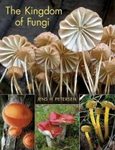Call us (08:30-17:00 UK)
01803 865913International
+44 1803 865913Need Help?
Help pagesWildlife Survey & Monitoring
- Aquatic Survey & Monitoring
- Professional Hand & Kick Nets
- Water Testing
- Waders & Aquatic Safety
- View All
- Amphibian & Reptile Survey
- Amphibian Survey & Monitoring
- Reptile Survey & Monitoring
- Scales, Balances & Holding Bags
- View All
Field Guides & Natural History
Academic & Professional Books
- Evolutionary Biology
- Evolution
- Human Evolution & Anthropology
- Cladistics, Phylogeny & Taxonomy
- View All
British Wildlife
British Wildlife is the leading natural history magazine in the UK, providing essential reading for both enthusiast and professional naturalists and wildlife conservationists. Published eight times a year, British Wildlife bridges the gap between popular writing and scientific literature through a combination of long-form articles, regular columns and reports, book reviews and letters.
Conservation Land Management
Conservation Land Management (CLM) is a quarterly magazine that is widely regarded as essential reading for all who are involved in land management for nature conservation, across the British Isles. CLM includes long-form articles, events listings, publication reviews, new product information and updates, reports of conferences and letters.





![Fungi non Delineati 47: Especies Nuevas e Interesantes del Genero - Inocybe (1) [New and Interesting Species of the Genus - Inocybe (1)] Fungi non Delineati 47: Especies Nuevas e Interesantes del Genero - Inocybe (1) [New and Interesting Species of the Genus - Inocybe (1)]](http://mediacdn.nhbs.com/jackets/jackets_resizer_xlarge/18/184010.jpg?height=620)
![Fungi non Delineati 47: Especies Nuevas e Interesantes del Genero - Inocybe (1) [New and Interesting Species of the Genus - Inocybe (1)]](http://mediacdn.nhbs.com/jackets/jackets_resizer/18/184010.jpg)
![Fungi non Delineati 47: Especies Nuevas e Interesantes del Genero - Inocybe (1) [New and Interesting Species of the Genus - Inocybe (1)]](http://mediacdn.nhbs.com/jackets/jackets_resizer/18/184010_1.jpg)
![Fungi non Delineati 47: Especies Nuevas e Interesantes del Genero - Inocybe (1) [New and Interesting Species of the Genus - Inocybe (1)]](http://mediacdn.nhbs.com/jackets/jackets_resizer/18/184010_2.jpg)





![Fungi non Delineati 25: Osservazioni sul Genere Melanoleuca [Observation on the Genus Melanoleuca]](http://mediacdn.nhbs.com/jackets/jackets_resizer_medium/16/162155.jpg?height=150&width=105)

![Fungi non Delineati 27: Macrobasidiomicetos Asociados a Eucalyptus en la Peninsula Iberica [Macrobasidiomycetes Associated with Eucalyptus on the Iberian Peninsula]](http://mediacdn.nhbs.com/jackets/jackets_resizer_medium/16/162158.jpg?height=150&width=102)
![Fungi non Delineati 17: Le Genre Gymnopilus P. Karst en Europe [The Genus Gymnopilus P. Karst in Europe]](http://mediacdn.nhbs.com/jackets/jackets_resizer_medium/13/134236.jpg?height=150&width=108)


![Fungi non Delineati 63-64: Funghi Rari, Critici o Interessanti dalla Finlandia [Rare, Endangered and Interesting Mushrooms from Finland]](http://mediacdn.nhbs.com/jackets/jackets_resizer_medium/20/207021.jpg?height=150&width=106)

![Fungi non Delineati 18: Contribution à la Connaissance de Quelques Discomycètes Operculés Rares ou Méconnus [Contribution to the Knowledge of some Rare or Poorly Known Operculate Dyscomycetes]](http://mediacdn.nhbs.com/jackets/jackets_resizer_medium/13/134237.jpg?height=150&width=104)
![Fungi non Delineati 19: A Study on Nivicolous Myxomycetes, the Genus Lamproderma I [English / Spanish]](http://mediacdn.nhbs.com/jackets/jackets_resizer_medium/13/134238.jpg?height=150&width=103)













![Fungi Europaei, Volume 7: Lactarius Pers. [Italian]](http://mediacdn.nhbs.com/jackets/jackets_resizer_medium/10/103517.jpg?height=150&width=100)

![Fungi Europaei, Volume 1: Agaricus L. [English / Spanish]](http://mediacdn.nhbs.com/jackets/jackets_resizer_medium/16/168653.jpg?height=150&width=101)
![Fungi Europaei, Volume 3: Tricholoma [Italian]](http://mediacdn.nhbs.com/jackets/jackets_resizer_medium/15/158633.jpg?height=150&width=100)

![Fungi Europaei, Volume 12: Corticiaceae s.l. [English]](http://mediacdn.nhbs.com/jackets/jackets_resizer_medium/18/188112.jpg?height=150&width=98)
![Fungi Europaei, Volume 10: Polyporaceae s.l. [English / Italian]](http://mediacdn.nhbs.com/jackets/jackets_resizer_medium/15/156572.jpg?height=150&width=104)
![Fungi Europaei, Volume 6: Hygrophorus s.l. [Italian]](http://mediacdn.nhbs.com/jackets/jackets_resizer_medium/96/96219.jpg?height=150&width=105)
![Fungi Europaei, Volume 3A: Tricholoma (Fr.) Staude Supplemento [Italian]](http://mediacdn.nhbs.com/jackets/jackets_resizer_medium/15/158634.jpg?height=150&width=105)
![Fungi Europaei, Volume 9: Amaniteae [French]](http://mediacdn.nhbs.com/jackets/jackets_resizer_medium/15/156571.jpg?height=150&width=99)
![Fungi Europaei, Volume 14A: Hebeloma (Fr.) P. Kumm. – Supplement, Based on Collections from Italy [English]](http://mediacdn.nhbs.com/jackets/jackets_resizer_medium/25/252092.jpg?height=150&width=107)
![Fungi Europaei, Volume 8: Xerocomus s.l. [English / Italian]](http://mediacdn.nhbs.com/jackets/jackets_resizer_medium/13/138410.jpg?height=150&width=100)